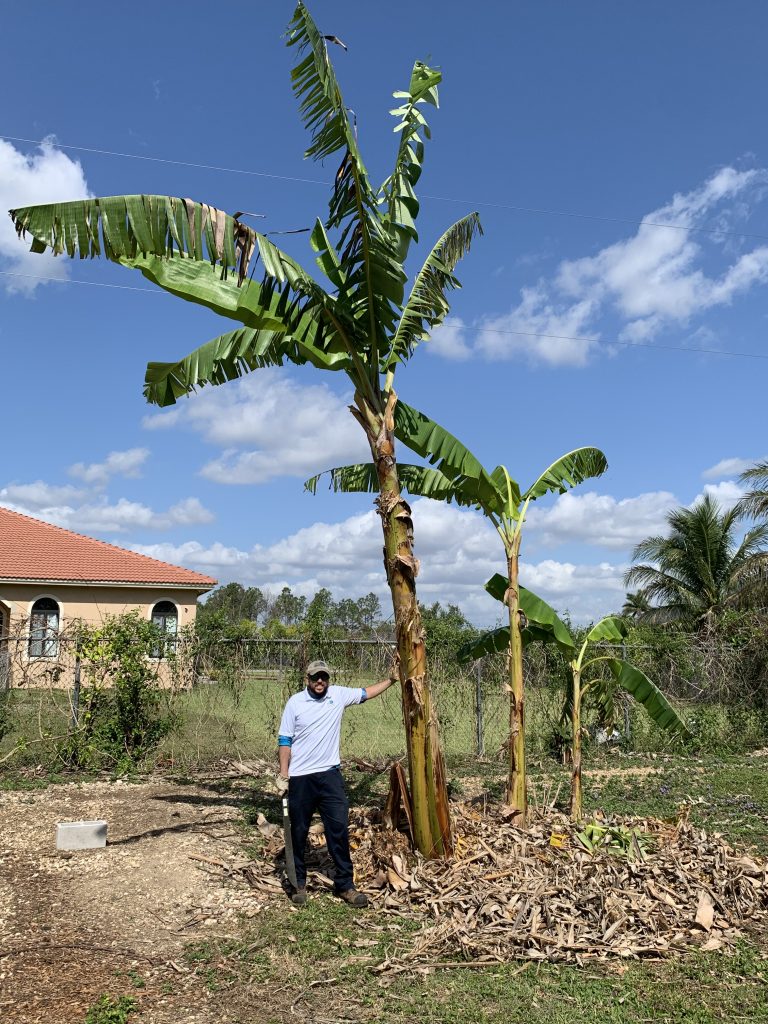The banana is the most consumed fruit in the world. That should really come as no surprise as the banana is not only packed full of healthy calories and nutrients, it is also quite delicious. In addition to being a global favorite, the banana is also extremely easy to grow.
To grow bananas successfully, a location is required where the plants will get full sun, as well as using a banana cultivar (or type) that will be somewhat resistant to some of the nastier fungi that attack banana plants. ‘Goldfinger’, ‘Mona Lisa’, and ‘Sweetheart’ are all recommended banana cultivars while ‘Platano Burro’ is a recommended plantain cultivar.
Bananas will sucker, meaning that the mother plant will make clones of herself, or “pups” off to the side. These clones can sometimes become too crowded, so you may need to maintain your banana planting by occasionally taking out a banana plant or two. Leaving three plants is ideal: the mother plant, then one about half the size of the mother, and then one smaller still. This, along with removing any brown leaves will open the plants up to as much sunlight as possible.
Once a banana plant has fruited, it will die. The plant will live on through its pups, but it will slowly wither away. After a plant has fruited, it is a good idea to remove the plant and turn it into compost by simply cutting the old plant into pieces and laying it at the base of the banana planting. When the mother plant dies, it will be replaced by the next plant and so on. If you remove the plants roots and all, you can give them to a friend to grow. The plants transplant very easily. The new plant will always retain the cultivar characteristics of the mother plant.
Bananas do best with organic soil and a fair amount of water. They can survive on only the water they receive during South Florida’s rainy season, but if you give them a few hits from the hose during our dry season, they will be much happier. Using mulch around banana plants helps to make the soil more organic, and it is always a good idea to cut up old banana leaves and plant parts and drop them at the base of your banana planting to decompose and help build the soil.
Banana bunches are produced at the top of the banana plant. They are ready to harvest when the bananas on the top part of the bunch begin to turn yellow. Once that yellowing begins, you can harvest the full bunch and let it ripen off of the plant. It’s a good idea to let the bunch sit in the shade for a few hours before dividing up the banana hands. If you don’t, there will be a lot of sap when you try and take the hands apart.
Bananas are a rewarding and easy tropical fruit to grow in South Florida. No backyard can be considered complete without them!


 2
2
